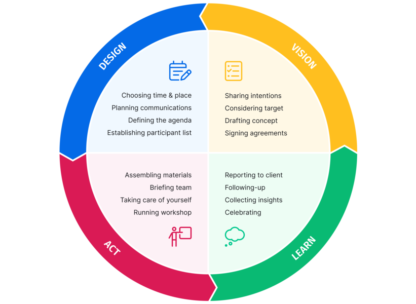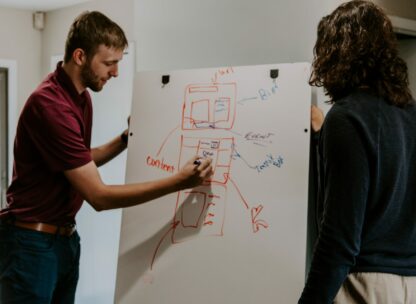5 Tips To Engage your Audience During Workshops

Different people – different learning styles
To engage the room you have to keep in mind that people learn in different ways. Some are visual learners who prefer pictures and diagrams; others are physical learners who like to use their body and sense of touch to understand problems.
When putting together the agenda for the training, make sure to incorporate both group exercises and individual ones. Put in varying activities where participants need to watch a video or read a story, move around the room or discuss a task.
Create an environment where all the different learners are welcomed and engaged.
Relevance
We can’t expect participants to pay attention to a session that doesn’t connect with them.
They want to learn about a concept or problem that resonates with them and can potentially make their situation, behaviour or current situation better.
The key to delivering relevant content is by asking some questions first!
Do some preliminary research on your participants, or send them a survey before the training to tailor content according to their needs. However, sometimes you don’t get the luxury of getting to know your audience beforehand. In these situations don’t get discouraged!
Call a contact person who might know the participants and ask some questions that would help you design the session. Schedule a quick phone interview with 2-3 participants.
If all else fails you can still ask participants questions right at the beginning of the training. What do you hope to get out of this training? What do you expect in these 3 hours? What are your expectations for the day? The answers will give you some direction.
Make it a dialogue
Isn’t it hard to pay attention to someone for 45, 90 or 120 minutes continuously? Especially considering the average human attention span these days is said to be around 8 seconds. Although the above-mentioned situation might happen more often during university lectures or big conferences, there is always room to improve in training situations as well.
To avoid long talks or explanations during a session (and thus keeping the attention alive) formulate theories, concepts or bigger topics into a conversation. There are several reasons to do so.
First, the session will be more enjoyable for everyone.
Second, you can leverage the group knowledge on topics you wanted to present and check if something is no longer interesting or needs to be clarified.
Third, having a dialogue allows participants to express their opinions, which could lead to hearing several different opinions, making the session more inclusive and diverse.
A simple way of start a discussion is to keep the answers to yourself, meaning when a participants ask something instead of answer it yourself, involve the whole group of giving an answer.
Tell a story
Stories are powerful. We connect to each other through stories. We buy certain things because the stories they tell are appealing to us, and we pay for movies, theatre tickets, and books to read. Our own realities are created by our narratives, the stories we tell ourselves each day.
So why don’t we use stories in the training environment? It has been proven that hearing a story releases chemicals in our brains making us more focused, relaxed and creative. Plus people better remember facts presented in story form than in a diagram or chart.
For instance ask participants to share a story of a challenge they’ve overcome to enhance group cohesion.
If you are crafting public speaking or leadership sessions, introduce the concept of public narrative.
It is a powerful framework for telling stories that inspire action. It consists 3 stages: the story of self where you share the values that are calling you to act. The story of us where you communicates the values that are shared by those you want to motivate to act. Finally the story of now share the challenge that demand action right now.
Whether you are delivering your session within this framework or encourage your participants to create their own stories following these steps it will result in high engagement.
Plus, try to use metaphors, case studies, real-life examples or your own stories to engage your participants!
Gamify
Games are providing a natural learning setting. They are involving, interactive, improving competencies and building skills. That’s why they are fun and engaging.
When you feel like energy and engagement goes down and participants start to stare out of the window or at their phones, introduce a game. It makes people move, compete, think, and usually brings laughter and fun into the session.
A more advanced version of incorporating games into trainings would be to explain or shed light on a topic through a game. Would you like to introduce participants to strategy thinking? Or emphasize the importance of active listening? Have them learn to give effective feedback? If you don’t know where to find games for these topics, don’t worry! SessionLab has a free, open source workshop library with more than 400 training games and activities.
Do you have more tips on how to engage participants during training events? Or have you already tried one from the library? Tell us in the comments; we are genuinely curious.
Stay tuned for more posts for facilitation and training inspiration, tips and tricks from the makers of Sessionlab! If you don’t want to miss a post, subscribe to our blog! And if you have an opinion on any of the subjects, share it with us in the comments. We would love to hear from you!



Leave a Comment